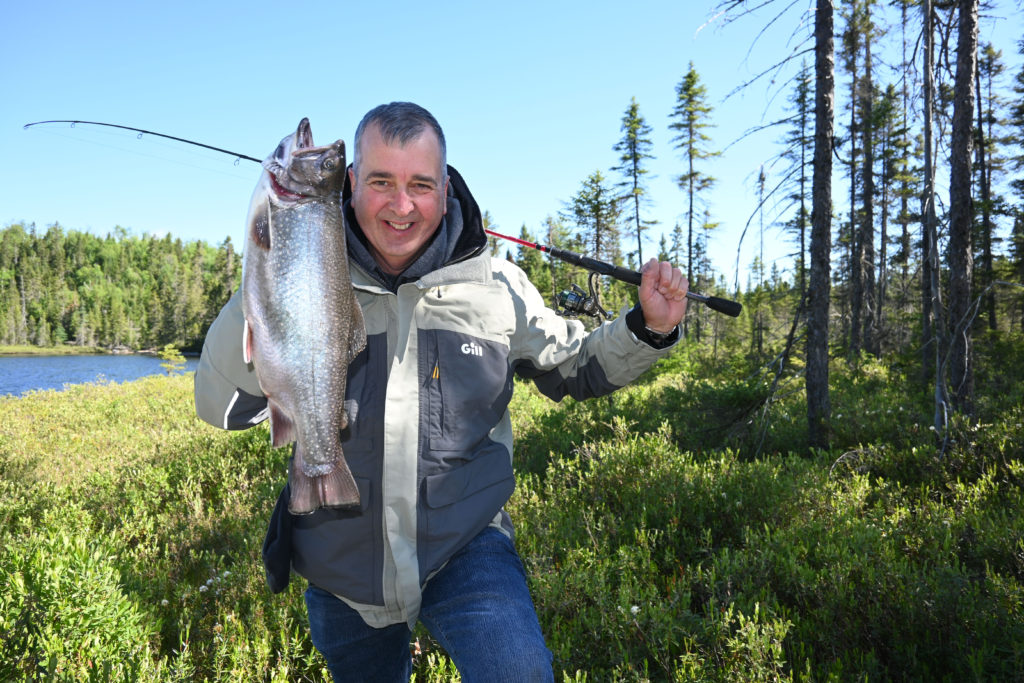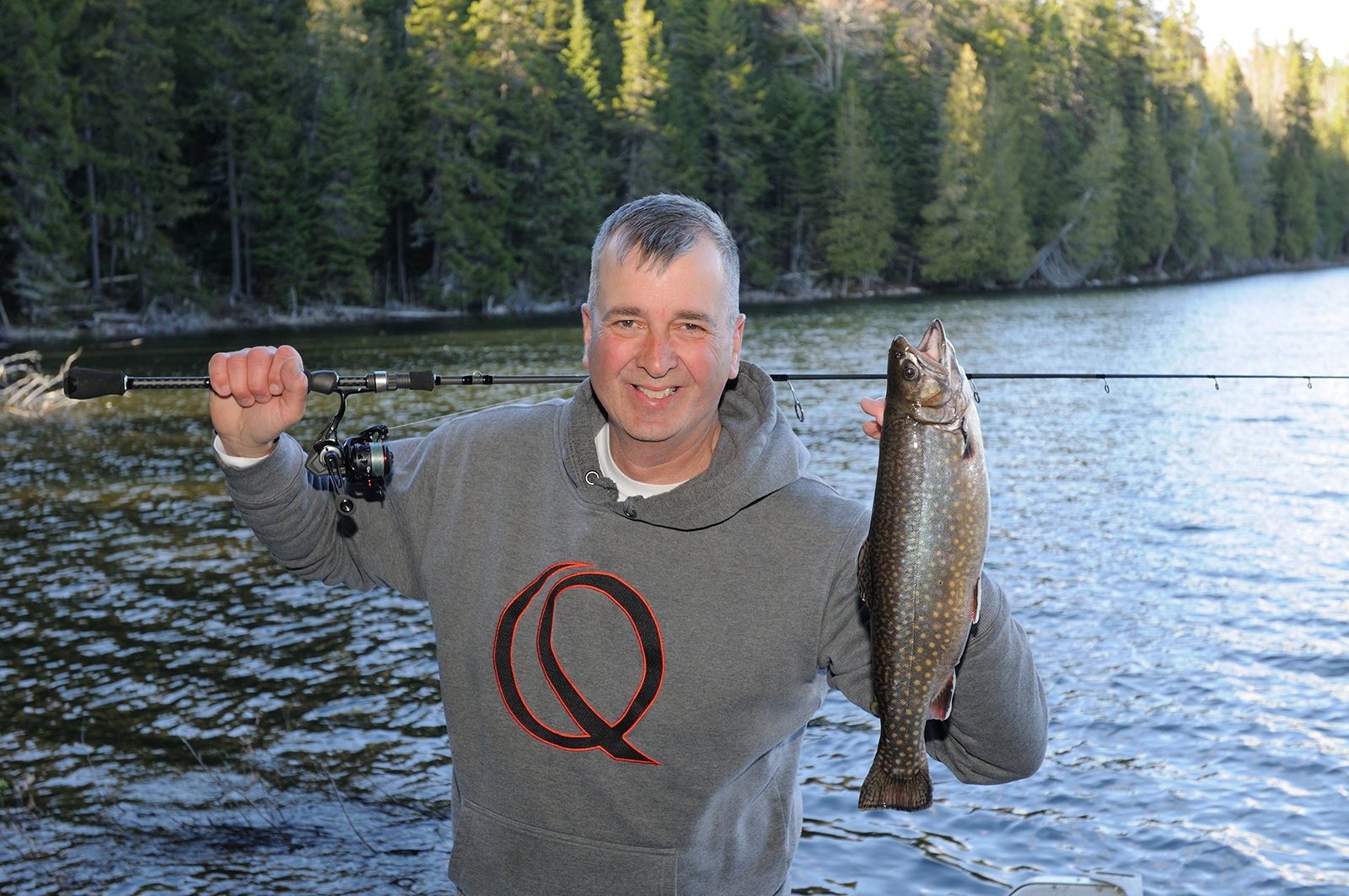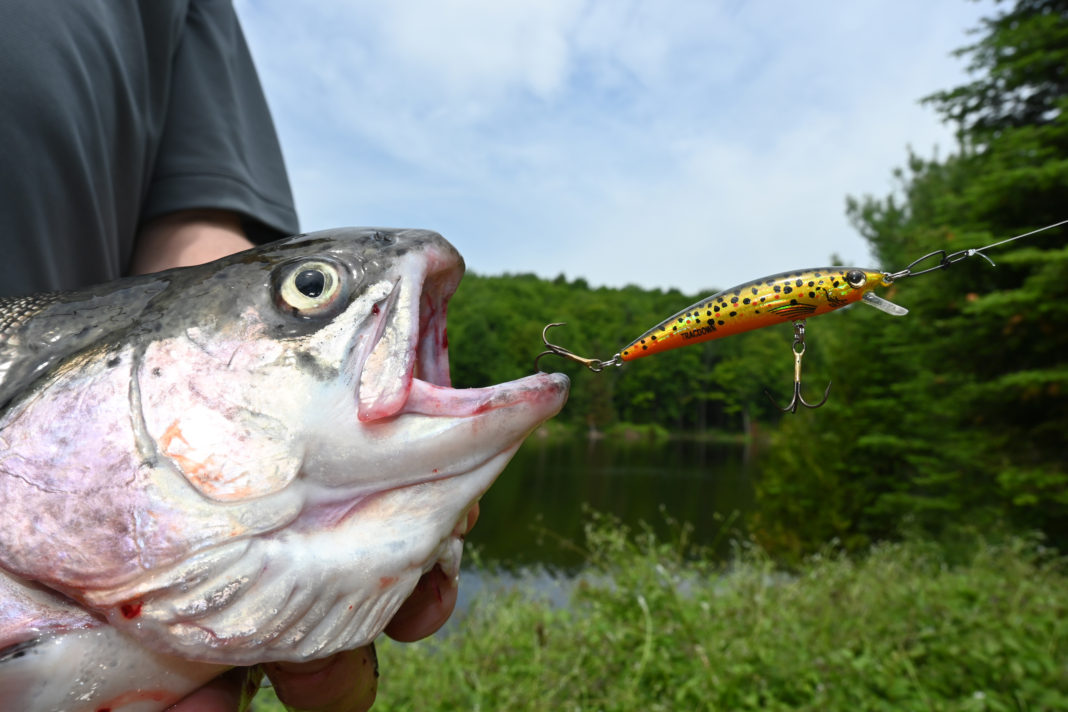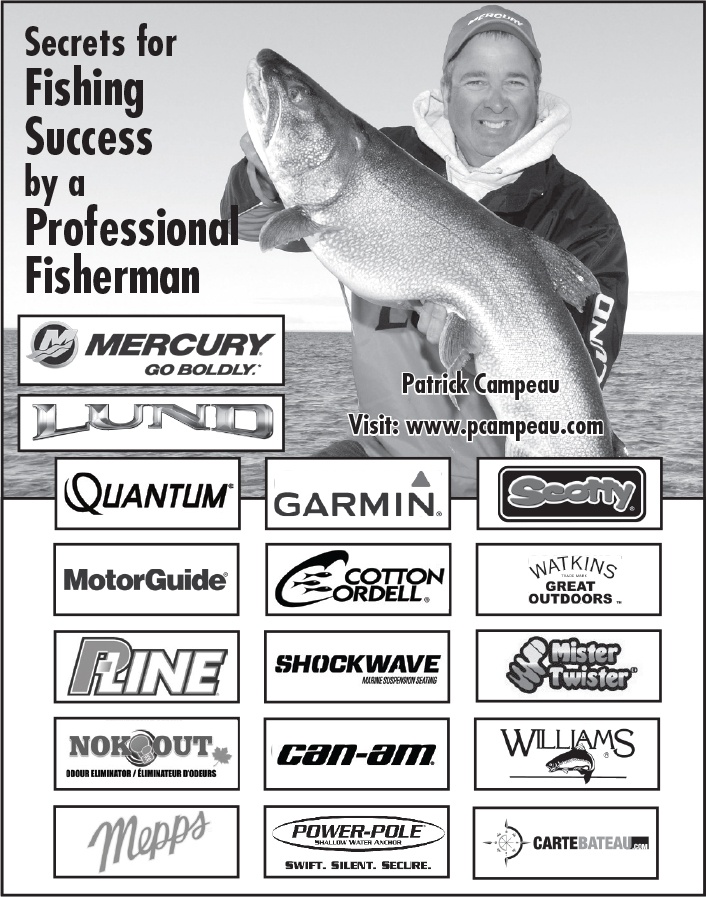Get in touch with your tackle to land more lunkers!
By Patrick Campeau
One of the greatest skills to acquire if you hope to catch fish is the ability to detect strikes. From the first curious nibble to the predatory attack, the ability to sense the slightest twitch of your rod and line can make the difference between a day of disappointment and a delicious shore dinner!
When you master the fine art of angling you will be able to distinguish the first tentative nibbles, and set your hook as a true sportsman, ready to play the fish with finesse. It is a very satisfying experience when your rod becomes an extension of your senses, transmitting each impulse to your hand, and your tackle prevails in the age-old battle between human and fish.
The dedicated angler will select the rod, reel, line, and lure that matches the size and strength of the fish, turning each lakeside joust into a sporting event where your skills are tested, and the fish has a fighting chance to steal the bait and live to fight another day.
 The science of strikes…
The science of strikes…
When a fish tracks the movement and action of your lure, you cannot always anticipate the ideal time to set your hook. Fish often test the bait or the lure, gingerly nibbling before determining whether this is a food source, something to play with, or a challenger to their territory. Because some lures have an aggressive “swimming” action, it can be puzzling for the angler to identify the stage of the attack that has just occurred. A fish will generally create a brief tension on your line, which will cause the rod to flex… since the fish’s trajectory will not suddenly stop when it attacks of your lure, the action of your rod tip will help you detect the instant the strike becomes an opportunity to set your hook. The same variety of strike action will occur when you are trolling and a fish has picked up your lure it rarely comes to a complete stop, but it often changes direction once it has taken the lure.
It can be a whole different story when the fish literally hammers your lure, without engaging in the preliminary nibbles.
Let’s talk about Walleye behaviour as an example. As soon as one of these fish jumps on a lure, like the famous Bandit Generator, Wally Diver Cotton Cordell or Bomber Deep Long A, its intentions are easily revealed through the motion and energy sensed by your fishing rod. However, when you are jig fishing, this can be a completely different story. On rare occasions, a Walleye will pick up a jig in a violent manner. It is important to understand that in almost 90% of all situations while jig fishing, Walleye will intercept a jig in a subtle manner. Few anglers realize that a Walleye can spit out a jig. To do this, Walleyes will contract their gill plates and absorb enough water to cause the jig to move within their mouth. A lateral displacement will occur, and this will often loosen the set of the hook, allowing the fish to literally spit out the lure. As Walleyes get larger, they can absorb a large quantity of water, which will also be quickly evacuated by their gill plates. This could cause your jig to be trapped inside the mouth of the Walleye. Despite the size of the fish, and the force of the strike, even the most experienced angler will only detect a light hit that would resemble the contact generated when a fly comes to rest on your skin. What you will be able to detect will either be the line meeting the mouth of the fish, or the jig being swept away from the interior walls of its mouth. Amazing, isn’t it?
I am convinced that many anglers ignore the finer points of “playing” a sport fish. If you maintain close attention to the impulses transmitted by tour rod tip, and you detect a strike, you must immediately set the hook because the Walleye will quickly respond to what it has between its teeth. If the lure’s texture appears natural, like a minnow or a source of food, it will swallow it. However, if it detects a sharp point, a jig head or any other indicator that will reveal the object to be something foreign to the natural marine environment, it will quickly spit it out. Unfortunately, there are anglers who, when they experience a bite, will wait a second before setting the hook. What they unfortunately do not realize is that the impulse they think feels like a second attack is actually the Walleye spitting out the jig. As you can well imagine, their unsuccessful efforts to set the hook make them believe that the Walleyes are not biting properly, and they are difficult to hook – but in fact, it is the angler who has not understood the behaviours of the species.
Lake Trout that are teased by jigs, and Smallmouth Bass that you may try to fool with tubes, grubs, or other soft bait, will also attack your lures – in most cases acting in a subtle manner.
 Pay attention to line tension…
Pay attention to line tension…
While fishing, regardless of the tackle and technique you choose, it is important to always maintain a positive connection with the lure. If you have any slack in your line, it is virtually impossible to detect the presence of a fish. For example, if you are jig fishing, it is essential to “feel” the lure during its descent toward the bottom. If you allow the jig to descend without having any positive feedback from the line and the rod tip, you cannot detect any strikes – and this is when about 90% of the fish will challenge the lure.
The same phenomenon will occur when you are fishing in current which causes an arc in your line… the force of the water will make you lose direct contact with your lure. Wind will also have the same effect on the line that is out of the water. For these two situations, it is preferable to shorten the distance that separates you from your lure and/or increase the weight of the lure.
If you opt for a very light lure, it could be very difficult to maintain the delicate sensory “feel” that is the key to successful angling. It is imperative to choose a smaller diameter line which will facilitate the perception of the fish strike during the lure’s descent in the water column. The proper line selection will reduce the effect of the wind or the current.
 Fishing Lines
Fishing Lines
I am convinced that most fishermen think that monofilament lines have a lot of stretch. We can confirm without doubt that most of these lines will indeed stretch from 15% to 35% when they are under a certain tension. If you take a line length of 20 metres as an example, if a large fish hits, chances that the line that you have just re-spooled will stretch to measure between 23-28 meters. This degree of stretch prevents the line from breaking, but it will complicate matters for the angler when it comes to hooksets. Also, it is evident that the angler must be considerably more attentive to the transmission of impulses that signify strikes.
Fluorocarbon lines have been a big hit for the last few years because they offer a zero-refractory effect under the surface of the water. The fish cannot see the line when it attacks your lure. What is equally awesome about this line is that it is the only type of line that will sink without the aid of anything external. All other lines float. The only negative thing about this Fluorocarbon type of line is that it stretches even more than monofilament, which makes it more difficult to sense any strikes, and it also makes setting the hook more difficult.
Super lines such as P-Line X-BRAID XTCB 8, as an example, have relatively small diameters that allow them to become more difficult for the fish to see, and your lures will sink more easily and deeper into the water column. What is important to observe is that all filaments of this family feature a stretch factor of less than 2%. This allows you to easily transmit your hook-setting power, and increases your ability to detect strikes, which gives you the feeling that fish are sending you a message, telling you that they are interested in your lure.
The best situation for the angler is to connect a 90-centimeter fluorocarbon leader of P-Line Tactical or P-Line Shinsei to a super line like the X-BRAID XTCB 8 by employing a Uni Knot. You will be impressed by the invisibility of this leader in proximity to your lure, but you will not have to worry about the stretching characteristics of the line.
Regardless of what type of line you use, it is important to support it with one or two fingers while trolling, jigging or live bait fishing. This will allow you maintain a direct sensory contact with the action of the lure, without having to wait the split second for the impulse to be transmitted by the fishing rod.
When it comes to fishing rods, it is important to remember that when the graphite content is increased, and when the graphite is of a higher quality, nibbles and strikes will be much easier to detect, allowing you to more easily sense the intentions of the fish.
The “feel” of the fishing rod is in your hands…
The handle of many fishing rods is covered with foam or cork. These materials are excellent in assuring that you have a comfortable grip. However, they unfortunately isolate the sensations transmitted by the rod, and it could be more difficult to sense the impulses that would be possible if you opt for a rod offering enhanced construction materials. Serious anglers prefer to have a less shock absorbent handle, so they can have greater “feel” when the fish takes the lure.
The bottom line…
Many fishermen select a fishing rod after under-evaluating a host of small technical points that may seem trivial, but in many cases, it’s the finer points of rod and line selection that make all the difference in the world.
I guarantee that if you consider the points mentioned above, you will sense more strikes, and land more lunkers!
Good fishing!
Patrick Campeau is a professional angler and 3-time champion. Inducted Member of the Canadian Fishing Hall of Fame.
Find out more about Patrick Campeau at www.pcampeau.com
Facebook: www.facebook.com/lapassiondepatrickcampeau
Instagram: prodepeche























